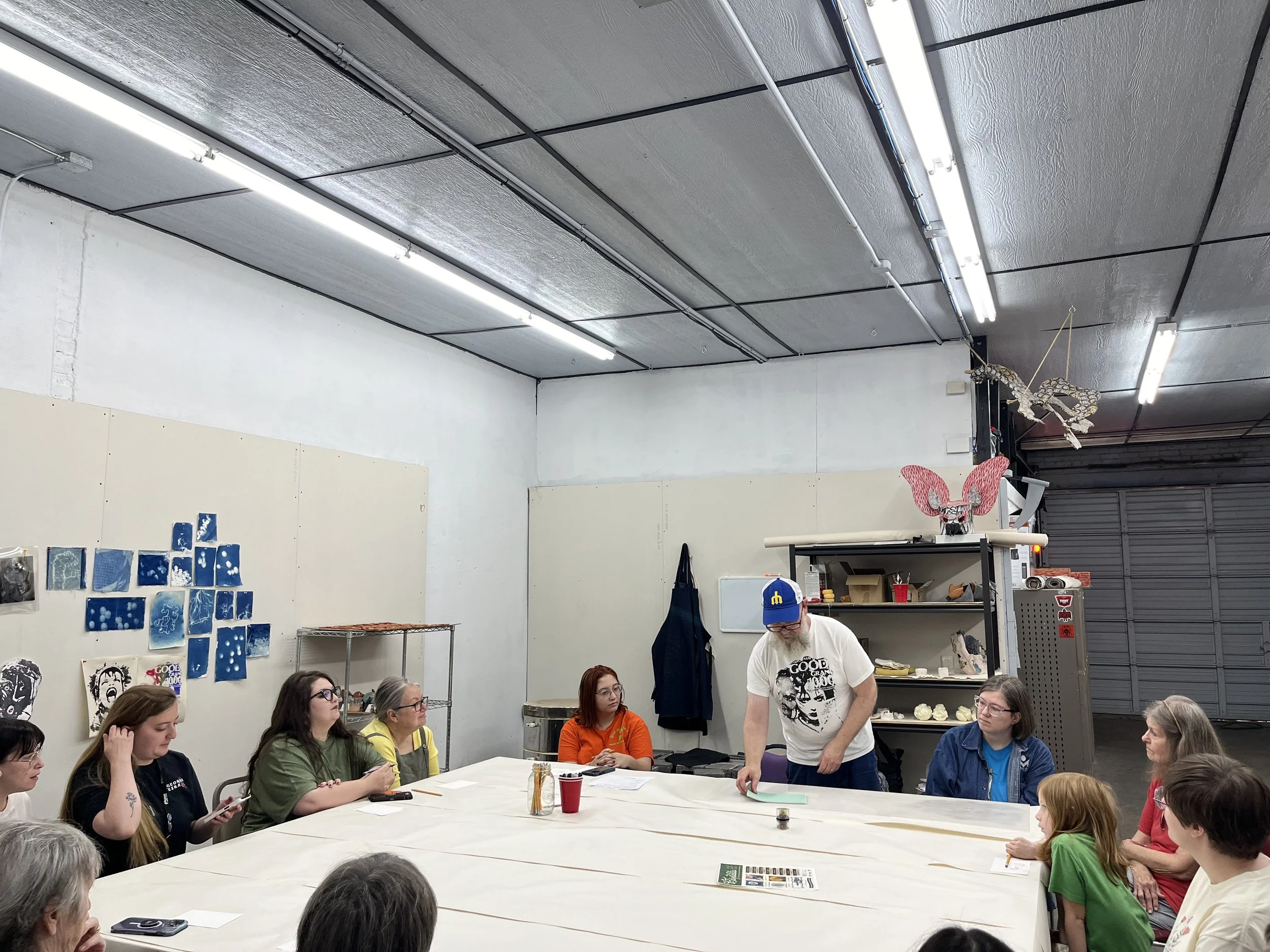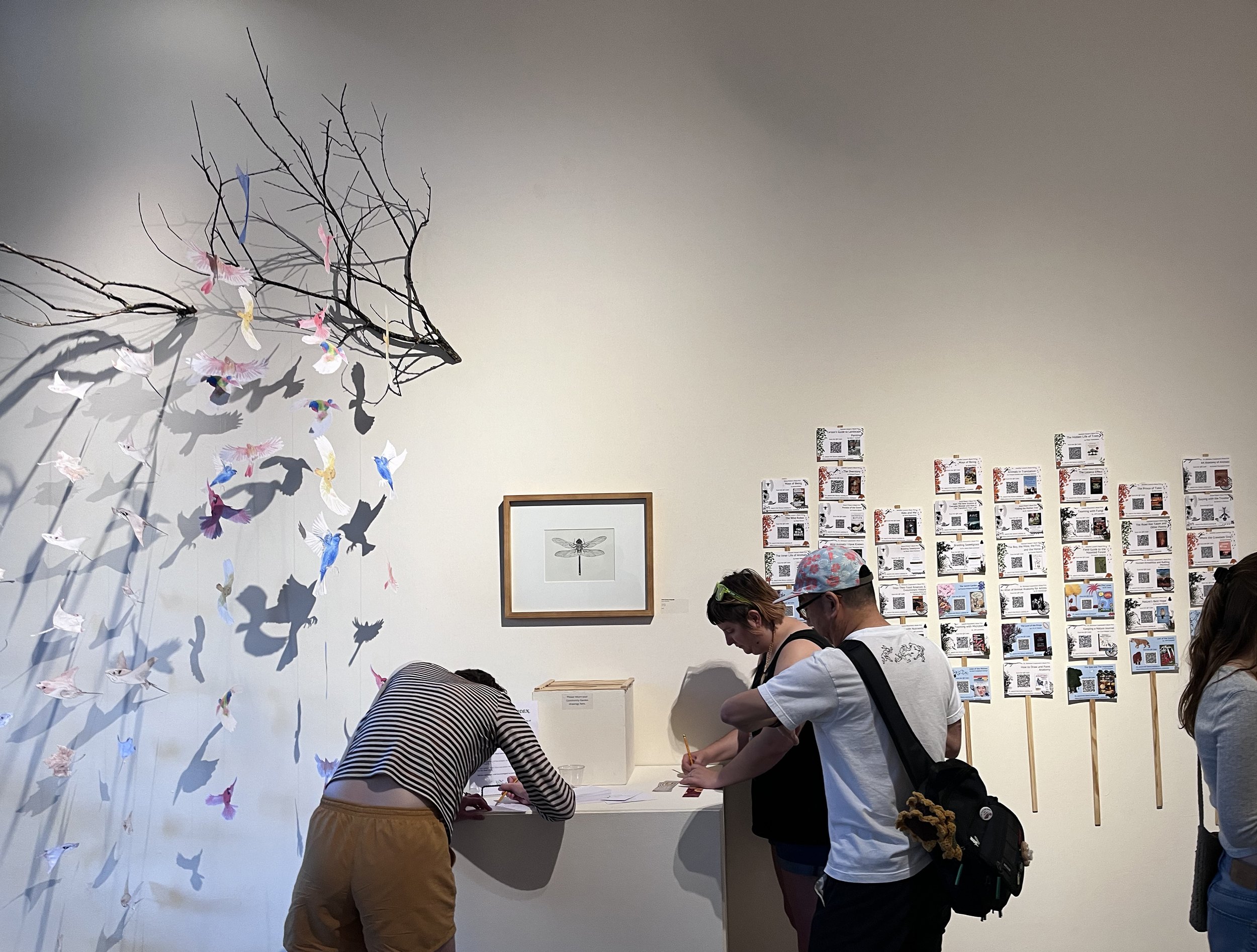Biophilia
May-July 2024
Mainsite Gallery, Norman ,OK
A collaborative, community centered exhibition examining nature through the lens of both art and science.
Through partnership with the Norman Public Library, we were able to offer a variety of free, public workshops related to the exhibit. Each program was taught by a qualified local artist, scientists, or writer and offered to all ages and abilities. These events were additionally supported by a generous grant from Factory Obscura.
The exhibit comprised of five artists and scientists, whose research centers on interactions with and impacts on the natural environment. Artists included Lauren Rosenfelt, Hannah Harper, Grace Potter, Dr. Nicholas Czaplewski, Jennifer Larsen, and Haley Prestifilippo.
This collaborative drawing project asked the public to contribute small drawings in response to a simple prompt, “What do you think of, when you think about nature"?” Comprising over 100 drawings and images from the community, these images were collected throughout the duration of the show and have been bound into a large book available for public viewing.
Curatorial Statement
Nature is often referenced as an independent entity, permeating human experience but separate from it. It is embodied as a mother, a threat, beauty, violence, something to be controlled and something that controls, something to escape and something to escape into. Humans have sorted the innumerable aspects of nature into scientific fields, building chronologies of evolution, ordered taxonomies, and tables of elements; we perpetually attempt to unveil the hidden infrastructures keeping the universe in place. The work in this exhibit considers a few of these analytical and emotional frameworks through which we interpret nature.
Biophilia references a theory described by 20th century biologist E.O. Wilson, describing an innate desire for connection and understanding between humans and other living organisms. Grace Potter’s reliquaries hint at this desire, where mundane encounters with insect bodies become spiritual, mystical experiences. Echoing sculptural lines magnify tiny, often overlooked forms of dead insects, inviting us to participate in vibrational communion. Growth and decay are bound as a single vital motion, rather than opposing forces; together they weave the structural components to propel life forward. Lauren Rosenfelt’s work reinforces this vulnerability and radical collaboration as integral to survival. As a biologist, Rosenfelt embeds nuanced ecological perception into her work, decentering the human perspective. Her drawings and installations underscore a shared future, accessible right now through intentional reconsideration for our relationship with fellow organisms. The conversation about nature shifts from how to control, to how to participate.
Hannah Harper’s vibrant wildlife paintings answer with observation, peering into the daily spaces and habits of familiar animals. Often working in the field, her quick brushstrokes build subtle narratives and mystical portraits of familiar animals, conjuring the sublime. Ancient cave paintings and global mythologies demonstrate the enduring human fascination with animals; our relationship to them often characterized by anthropocentrism. In Dr. Nicholas Czaplewski’s carefully rendered and researched drawings, complex prehistoric landscapes tell stories of ancient, pre-human worlds. A vertebrate paleontologist, his work encompasses the immense scale of geologic time, suggesting reciprocity between past and present. The earth is unfathomably old, formed and reformed from the bones, meteorites, genes, and debris of living and non-living matter over millions of years. Jennifer Larsen’s entangled collections of found natural objects and animal illustrations reenact this accrual of matter and information. Variety in both objects and drawing style allude to the expansive diversity of life, piled together in cooperation.



